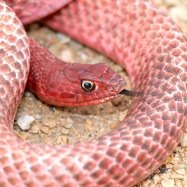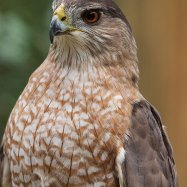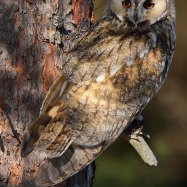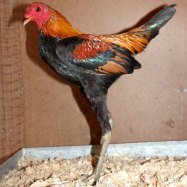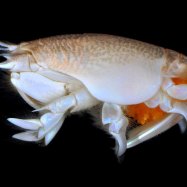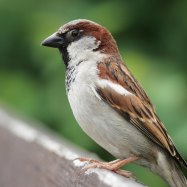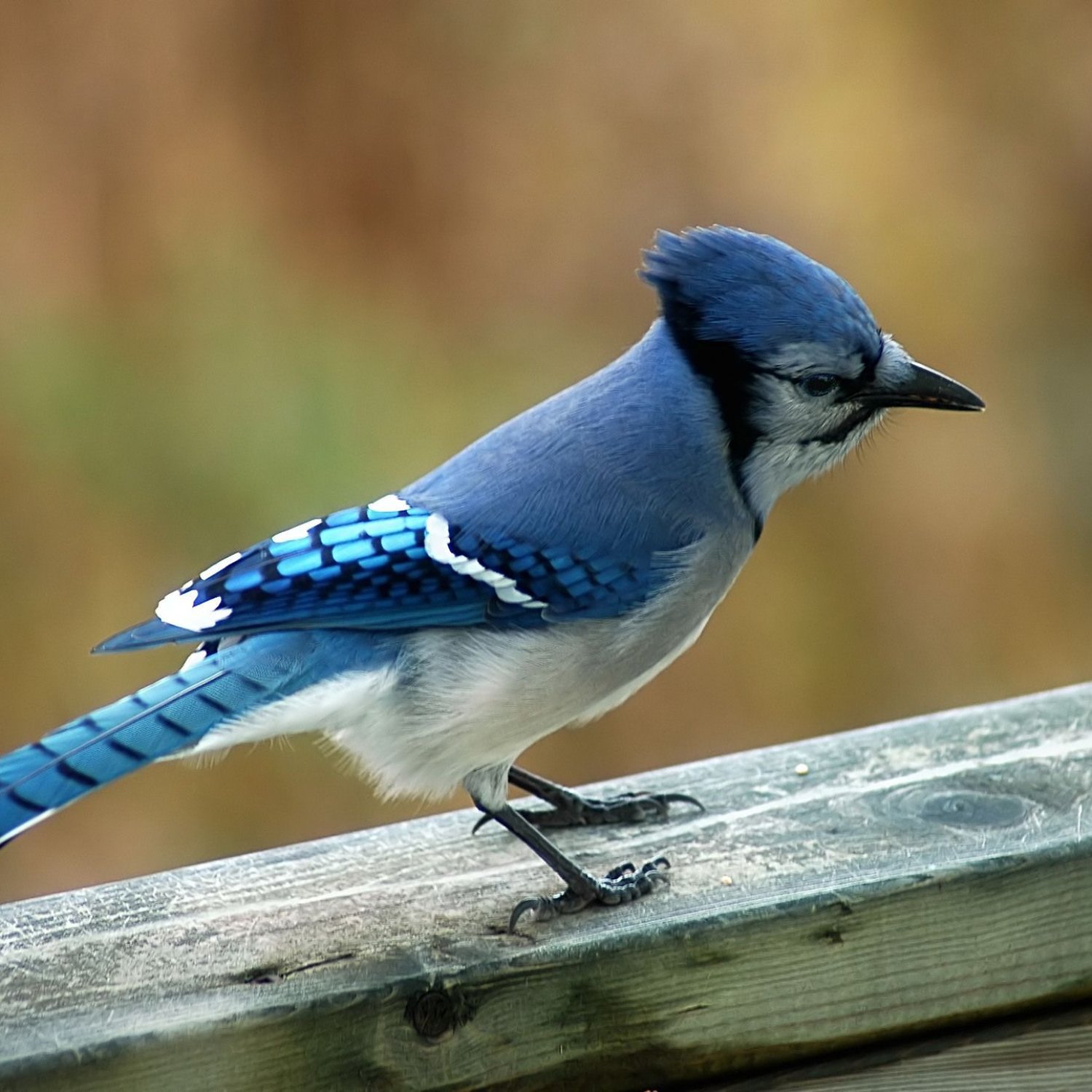
Blue Jay
9-12 inches (23-30 cm)
Meet the Blue Jay, a charming medium-sized bird with a distinctive crest on its head. Found in Eastern and central North America, it belongs to the Corvidae family. With a length of 9-12 inches (23-30 cm), this beautiful creature is a sight to behold. Keep an eye out for this vibrant blue and white bird on your next nature walk! #BlueJay #NorthAmerica #Corvidae #NatureWalks
Animal Details Summary:
Common Name: Blue Jay
Kingdom: Animalia
Habitat: Deciduous and coniferous forests, urban parks, and suburban gardens
The Majestic Blue Jay: A Symbol of Beauty and Intelligence
The vibrant colors and distinctive call of the Blue Jay make it one of the most beloved birds in North America. With its striking blue, white, and black plumage, this medium-sized bird has captured the hearts of birdwatchers, nature lovers, and artists alike. But there is so much more to this avian beauty than just its appearance. In this article, we'll delve into the world of the Blue Jay and discover its fascinating features and behaviors Blue Jay.Scientific Background
The scientific name of the Blue Jay is Cyanocitta cristata, derived from the Greek words "kyaneos" meaning blue and "kitta" meaning chattering bird. This name perfectly describes the bird's blue coloration and its distinct vocalizations. It belongs to the Corvidae family, which also includes crows, ravens, and magpies. The Blue Jay is classified as an animal in the Kingdom Animalia, Phylum Chordata, Class Aves, and Order Passeriformes.Habitat and Distribution
Blue Jays can be found in a variety of habitats, including deciduous and coniferous forests, urban parks, and suburban gardens. These birds are native to North America, and their range extends from eastern and central regions of the United States, through southern Canada and down to Florida. They thrive in deciduous woodlands, such as oak, hickory, and beech forests, where they can find a plentiful supply of acorns, nuts, and insects.Appearance and Body Shape
The Blue Jay is a medium-sized bird, measuring about 9-12 inches (23-30 cm) in length. One of its most distinctive features is its blue, white, and black plumage, which varies in intensity depending on the angle of light Bilby. The upperparts are a rich blue color, with a white belly and black wings and tail. The head has a black crest, which stands up when the bird is excited or alarmed. This beautiful bird has also been nicknamed the "blue crested jay."Feeding Method
Blue Jays are omnivorous, meaning they eat both plant and animal matter. Their diet consists of a combination of insects, nuts, seeds, and fruits. They are particularly fond of acorns and are known to bury them in the ground for later consumption. They also feed on the eggs and nestlings of other birds, making them somewhat infamous among birdwatchers. Despite this behavior, Blue Jays play a vital role in controlling insect populations and dispersing seeds, making them an essential part of the ecosystem.Behavior and Intelligence
Blue Jays are highly intelligent and social birds. They are often seen in pairs or small groups, communicating with each other through a wide range of vocalizations. Their most common call is a loud and harsh "jay-jay," which gives them their name. These birds are also known for their mimicry skills and can imitate the calls of other birds, animals, and even human voices. Their vocalizations serve a variety of purposes, including alerting other birds of predators, communicating with their mate, or establishing their territory.Blue Jays are also known for their remarkable problem-solving abilities. In a study conducted by researchers at the University of Cambridge, Blue Jays were found to be able to plan for the future and make decisions based on past experiences. They were also found to have a form of theory of mind, which allows them to understand the perspectives of other individuals. These traits make the Blue Jay one of the most intelligent birds in the world.
The Symbolism of Blue Jays
Blue Jays have long been associated with intelligence, curiosity, and vocalization. In Native American folklore, Blue Jays are revered for their cleverness and are symbols of intelligence and resourcefulness. They are also considered to be powerful spirit animals, representing wisdom and adaptability. In modern culture, the Blue Jay is often depicted as a messenger or guide, representing the qualities of clarity and truth.Conservation Status
The Blue Jay is a widespread and abundant bird, with a population estimated to be around 13.5 million individuals. Its conservation status is of least concern, as it is not currently facing any significant threats. However, like many other bird species, the Blue Jay faces challenges from habitat loss and fragmentation, collisions with man-made structures, and predation by domestic cats. To protect this beautiful and intelligent bird, it is essential to preserve its habitat and reduce the risks posed by human activities.Blue Jay Encounters in the Wild
If you are lucky enough to spot a Blue Jay in the wild, you will be treated to a dazzling display of beauty and intelligence. These birds are highly active and agile, making them challenging to observe up close. However, with some patience and the right timing, you may be able to catch a glimpse of their striking colors and hear their unique vocalizations.If you want to attract Blue Jays to your backyard, one way to do so is by providing them with a variety of food, such as sunflower seeds, peanuts, and suet. You can also install a birdbath or a shallow dish of water, as Blue Jays are known to enjoy bathing and splashing around. Just remember to keep your feeders and birdbath clean to prevent the spread of diseases.
In Conclusion
The Blue Jay is more than just a pretty face in the bird world. Its stunning colors, intelligent behaviors, and rich symbolism have captured the imagination of people for centuries. From its native forests in North America to modern-day backyards, the Blue Jay has found a way to enchant and inspire all those who encounter it. So the next time you hear the distinctive "jay-jay" call or catch a glimpse of blue in your backyard, take a moment to appreciate the majesty of this beautiful and intelligent bird.

Blue Jay
Animal Details Blue Jay - Scientific Name: Cyanocitta cristata
- Category: Animals B
- Scientific Name: Cyanocitta cristata
- Common Name: Blue Jay
- Kingdom: Animalia
- Phylum: Chordata
- Class: Aves
- Order: Passeriformes
- Family: Corvidae
- Habitat: Deciduous and coniferous forests, urban parks, and suburban gardens
- Feeding Method: Omnivorous
- Geographical Distribution: North America
- Country of Origin: United States
- Location: Eastern and central North America
- Animal Coloration: Blue, white, and black
- Body Shape: Medium-sized bird with a crest on the head
- Length: 9-12 inches (23-30 cm)
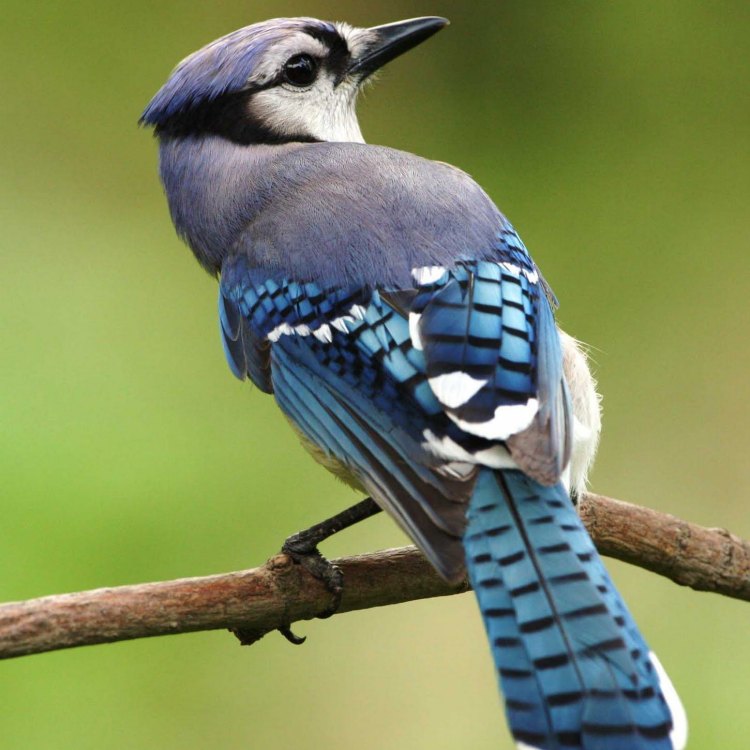
Blue Jay
- Adult Size: Medium
- Average Lifespan: 7 years
- Reproduction: Sexual
- Reproductive Behavior: Monogamous
- Sound or Call: Loud and varied calls, including mimicking other birds
- Migration Pattern: Some populations migrate, while others are resident
- Social Groups: Often found in small family groups
- Behavior: Aggressive and territorial
- Threats: Predation, habitat loss, and climate change
- Conservation Status: Least Concern
- Impact on Ecosystem: Seed dispersers and predators of small animals
- Human Use: Birdwatching, backyard feeding
- Distinctive Features: Bright blue coloration, black crest on the head
- Interesting Facts: Blue Jays can mimic the calls of hawks to deceive other birds. They also cache food for later use by burying it in the ground.
- Predator: Birds of prey, cats, and snakes
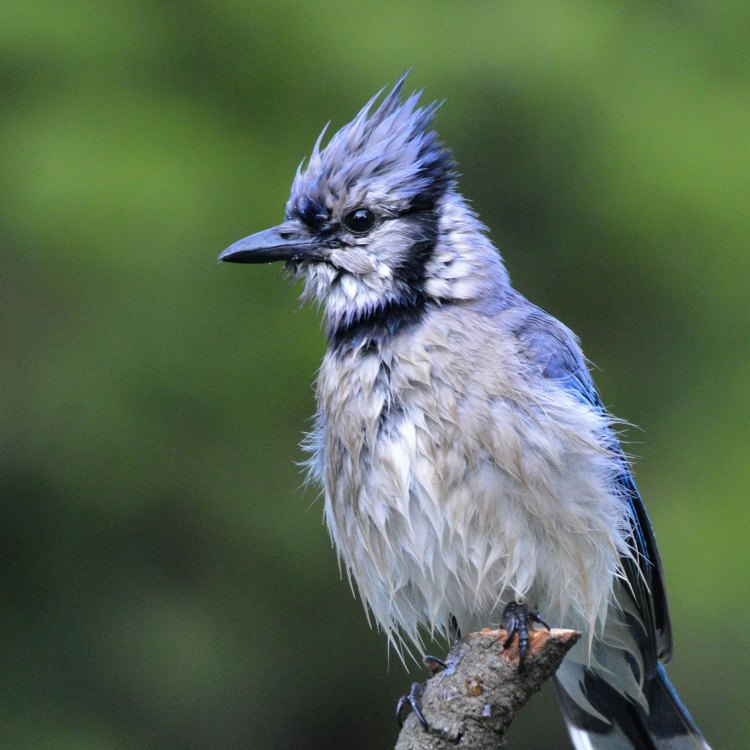
Cyanocitta cristata
The Fascinating Life of the Blue Jay
When we think of blue birds, the first image that comes to mind is usually a peaceful and serene one. However, the blue jay breaks that stereotype with its bold and brash personality. With its striking blue coloration and loud, varied calls, the blue jay is a bird that cannot be ignored. And while they may seem like just another bird in the backyard, they have many unique features and behaviors that make them stand out in the avian world PeaceOfAnimals.Com.A Not-So-Medium-Sized Bird
The blue jay, also known as Cyanocitta cristata, is a medium-sized bird, with an adult average size of 9-12 inches in length and a wingspan of 13-17 inches. While they may not be the largest birds in the avian world, their size is not to be underestimated. Blue jays have a stocky and compact body, with strong wings and a long, sturdy tail. This allows them to fly and maneuver quickly through the dense foliage of their preferred habitats.A Brief Life
While the blue jay may be a hot-shot in the avian world, their lifespan is surprisingly short. On average, blue jays live up to 7 years in the wild. However, some individuals have been known to live up to 15 years! One factor that contributes to their short life span is their aggressive and territorial behavior (more on that later). Moreover, the blue jay's diet primarily consists of nuts, seeds, and insects, which may not provide enough nutrition for them to thrive for a longer time.Sexual Reproduction and Monogamy
Blue jays are sexually reproductive, which means they require two individuals to produce offspring Black Bass. During mating season, which typically starts in March and lasts until July, male blue jays will select a potential mate and show off their bright blue coloration and unique calls to impress them. Once they have established a bond, the pair will then build a nest together, typically in the fork of a tree, and take turns incubating the eggs.But what sets blue jays apart from other bird species is their monogamous reproductive behavior. This means that they will only have one mate throughout their breeding season and will return to that same partner year after year. While this may seem like a romantic gesture, it is believed that their monogamy is influenced by the fact that blue jays are highly territorial birds and will aggressively defend their territory and mate from any intruders.
Loud and Varied Calls
It's no secret that blue jays are loud birds. Their calls can be heard from a distance and are a familiar part of the outdoor soundtrack in many parks and neighborhoods. But what sets blue jays apart is their ability to mimic the calls of other birds. They are known for imitating the sounds of hawks and other predators to deceive other birds. This behavior is believed to be a defense mechanism to protect their territory and offspring from potential threats.In addition to their mimicking abilities, blue jays have a wide range of calls, including screeches, whistles, and nasal notes. They also have a "whisper song," a soft and quiet call that is used for communication with their mates and offspring. With their loud and varied calls, blue jays are essential contributors to the symphony of sounds in the bird world.
The Migratory Debate
The migration pattern of blue jays is a hot topic of debate among experts. Some populations of blue jays are known to migrate, while others are resident birds, meaning they stay in their territory throughout the year. Blue jays that reside in the northern parts of their range, such as Canada and Northern USA, tend to migrate south for the winter. However, blue jays in Southern USA and Mexico are known to be resident birds. The reason for this split in migration patterns is not entirely understood, but it is believed to be influenced by food availability and weather conditions.Small Family Groups
Blue jays are often found in small family groups, consisting of an adult breeding pair and their offspring from previous years. These family groups are territorial and will often defend their territory from other blue jays. However, blue jays are not always alone. They are also known to form mixed flocks with other bird species, such as cardinal birds and woodpeckers, during the winter months for foraging and protection.Aggressive and Territorial Behavior
One of the most distinctive features of blue jays is their territorial and aggressive behavior. As mentioned earlier, blue jays are highly territorial birds and will defend their territory and mate from any potential threats, including other blue jays. When in defense mode, blue jays will fluff their feathers, spread their wings, and make a loud "skee-dee" call to warn intruders to stay away. They can also be seen swooping and dive-bombing predators or other birds that come too close to their territory.Threats to Their Existence
While blue jays may have a fierce and bold reputation, they are still vulnerable to threats that can affect their survival. One of the biggest threats to their existence is predation by birds of prey, cats, and snakes. Blue jays are also facing increasing challenges due to habitat loss, as deforestation and urbanization continue to shrink their natural habitats. Climate change is another concern, as it may disrupt their migration patterns and alter their food availability.Least Concern Conservation Status
Despite these threats, blue jays have a least concern conservation status, according to the International Union for Conservation of Nature (IUCN). This is due to their wide distribution and stable population numbers. However, continued efforts are needed to conserve their habitats and reduce potential threats to their survival.The Impact on Their Ecosystem
Blue jays may be small in size, but they have a significant impact on their ecosystem. As seed dispersers, they play a vital role in the growth and propagation of various plant species. They also contribute to maintaining the balance of populations of small animals, as they are skilled predators. Blue jays are also crucial indicators of the health of their ecosystems, as changes in their population numbers can indicate shifts in their habitats' health and balance.Humans and Blue Jays
Blue jays have a long and fascinating relationship with humans. Despite their bold and aggressive behavior, they have become a beloved sight in many backyards, especially for birdwatchers and backyard feeders. They are also often featured in popular culture, from their iconic appearance in cartoons to their use in sports teams' logos and names. Moreover, blue jays also have some economic importance, as they are often hunted for their bright blue feathers used in decorative pieces and accessories.Distinctive Features of the Blue Jay
The bright blue coloration of the blue jay is undoubtedly its most distinctive feature. Their blue feathers are caused by a pigment called melanin, which reflects light to appear blue. However, what makes the blue jay unique is that they have no blue pigment in their feathers. Instead, their feathers are made up of layers of cells that contain colorless structures that scatter light and create the blue color.Another distinctive feature of the blue jay is the black crest on their heads, which can be raised or lowered depending on their mood. This crest is used to express their emotions, with a raised crest indicating aggression and a lowered one signaling submission.
Interesting Facts About Blue Jays
Blue jays may have a familiar presence in our backyards and parks, but they still have many interesting secrets waiting to be discovered. One of the most impressive aspects of their behavior is their ability to mimic the calls of other birds. But they don't stop there. Blue jays can also mimic sounds in the environment, such as car alarms and chainsaws, and have been known to imitate human voices.Another interesting fact about blue jays is their ability to cache food. They will often bury food, such as nuts and seeds, in the ground for later use. This behavior not only helps them survive during the winter months when food is scarce but also contributes to the reforestation by planting seeds in the ground.
Predator-Prey Relationship
As with any animal, blue jays have their share of predators. Birds of prey, such as hawks and owls, pose the most significant threat to blue jays. However, cats and snakes are also known to hunt blue jays, especially during their nesting season when they are more vulnerable.But blue jays are not just helpless prey. They are also skilled predators, known for their agility and speed in catching insects and small animals. This gives them a crucial role in maintaining the balance of their ecosystem by keeping populations of small animals in check.
In Conclusion
The blue jay may seem like just another bird in the backyard, but they are much more than that. With their distinctive blue coloration, loud calls, and territorial behavior, they are a true standout in the avian world. And while their short lifespan and vulnerability to threats may seem like a cause for concern, blue jays continue to thrive and play an essential role in their ecosystems. As with any species, our efforts to conserve their habitats and protect them from threats are crucial to ensuring their survival for generations to come. So next time you see a blue jay, take a moment to appreciate the unique and fascinating life of this
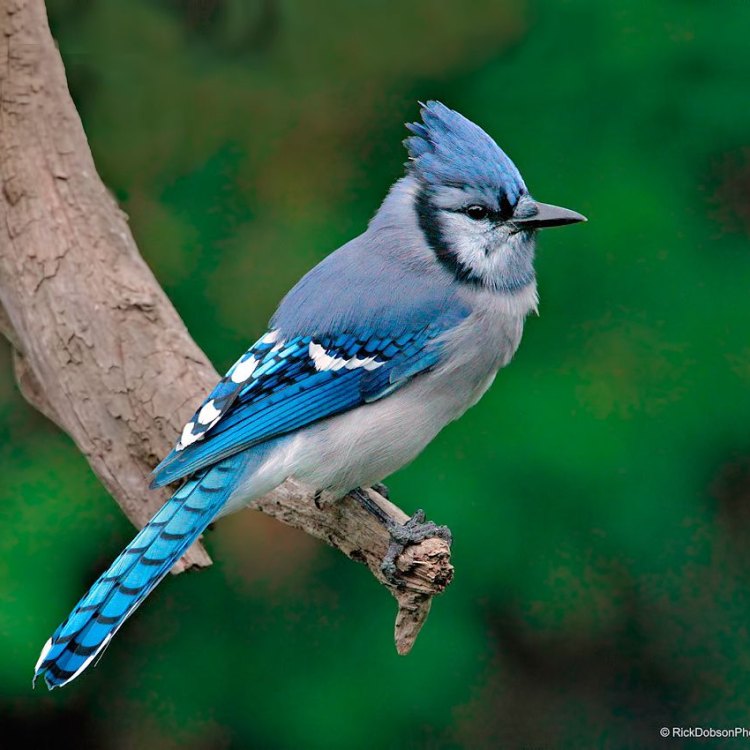
The Majestic Blue Jay: A Symbol of Beauty and Intelligence
Disclaimer: The content provided is for informational purposes only. We cannot guarantee the accuracy of the information on this page 100%. All information provided here may change without prior notice.


